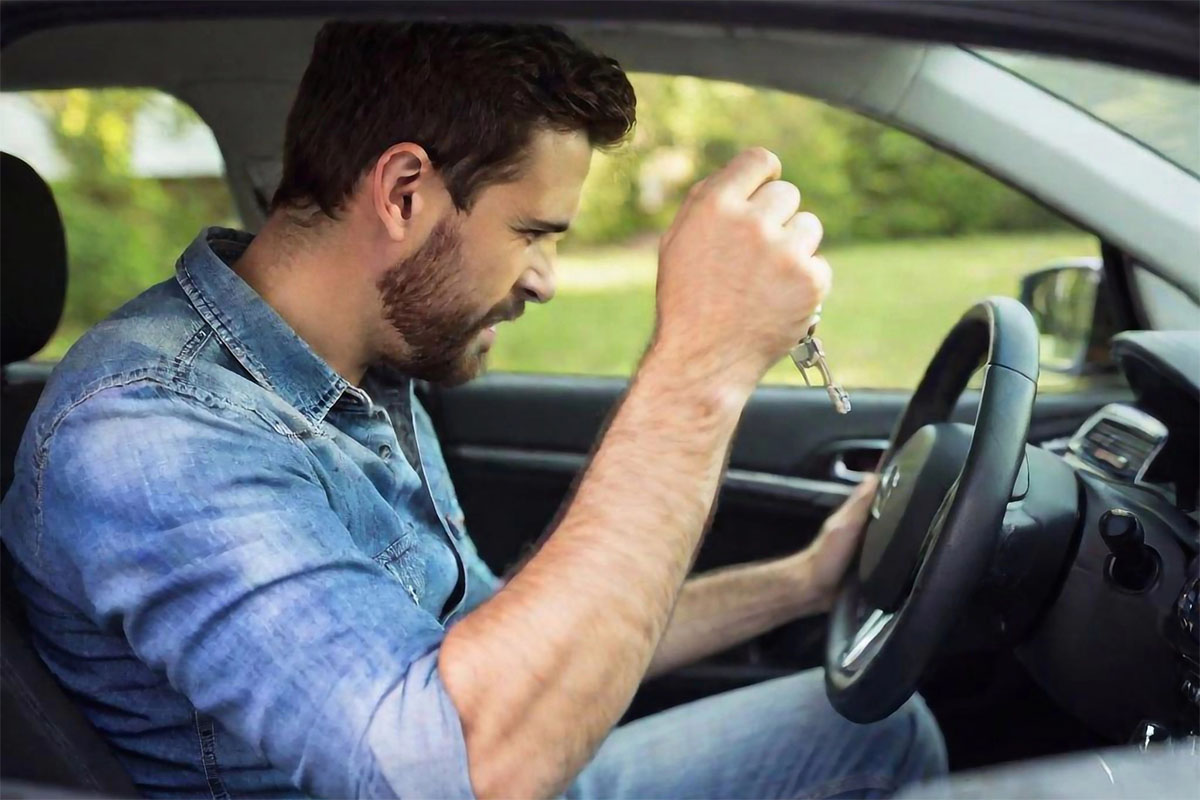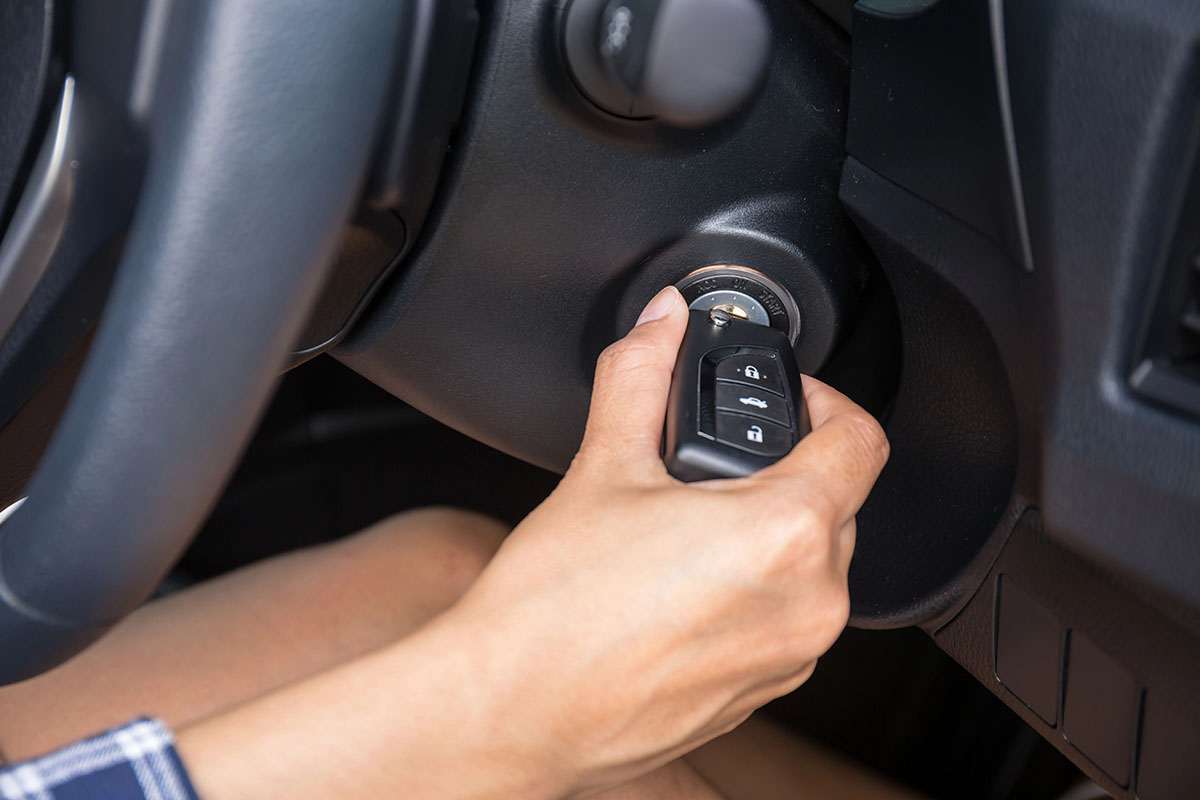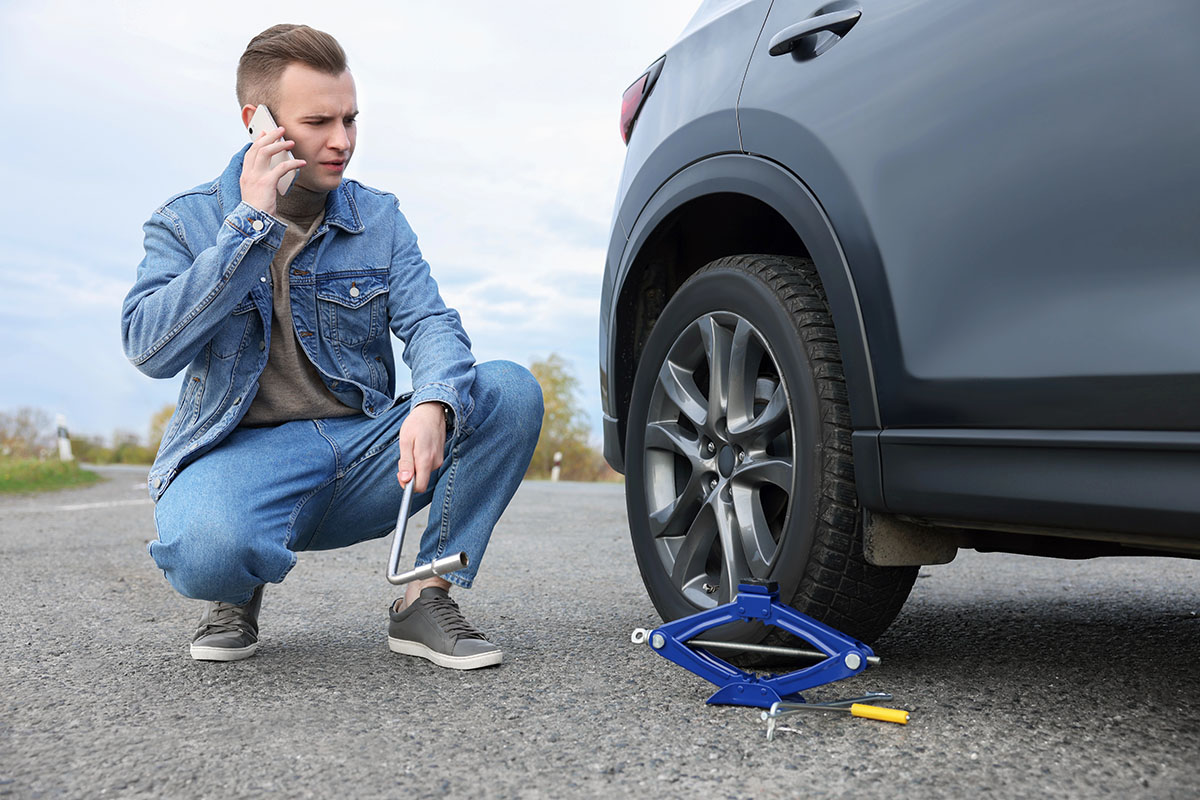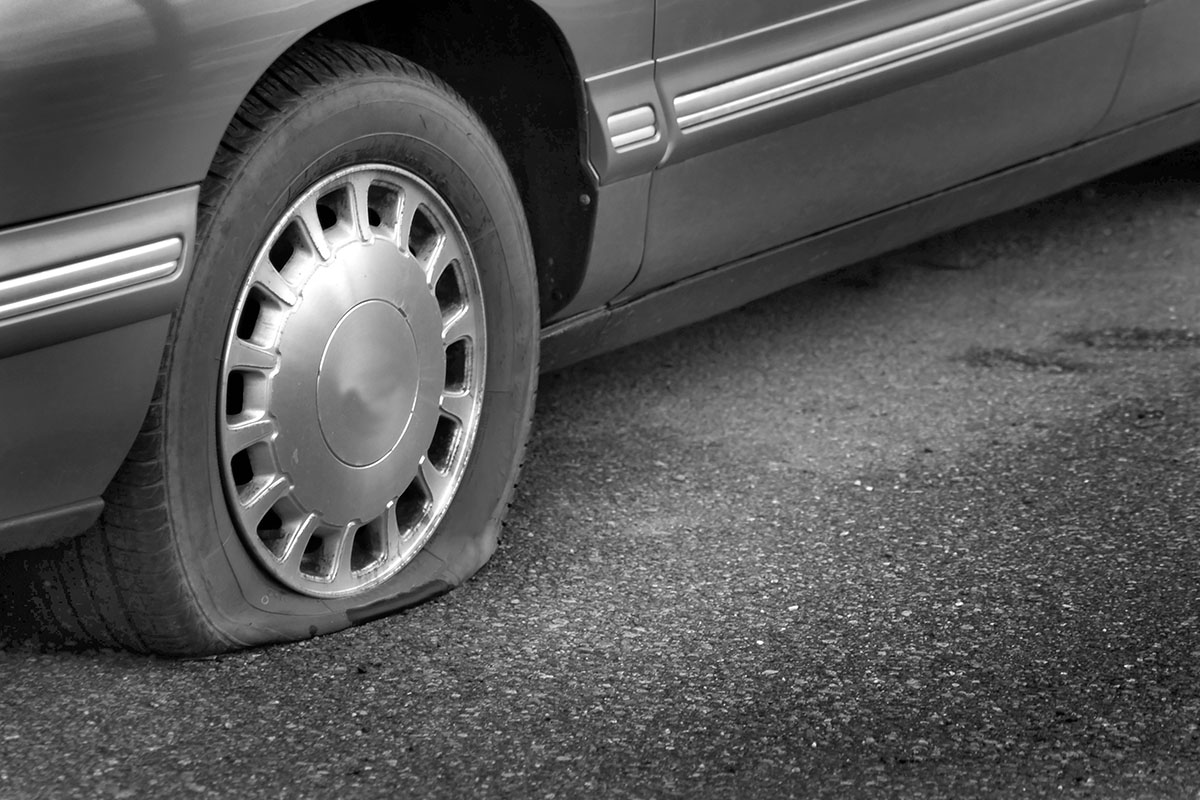A car that won’t start brings immediate frustration and disrupts your plans. You might find yourself stranded, late for work, or stuck in an inconvenient location without reliable Chandler roadside assistance ready to help.
But don’t fret, we cover the most common car starting problems and how to diagnose why your car won’t start. Instead of guessing or waiting for expensive repairs, you learn practical steps to identify the root cause, including what to do if you ever need Chandler emergency towing.
Below, you’ll learn:
-
- Recognizing symptoms linked to different starting failures
- Basic diagnostic tips to pinpoint problems
- When simple fixes are possible and when professional help is needed
Battery Issues: The Most Common Culprit
A dead or weak battery is the leading cause when your car refuses to start. Recognizing dead battery symptoms aids your troubleshooting. Watch for:
- Dim headlights and interior lights.
- Radio cutting out or fluctuating volume.
- Clicking sounds or complete silence when turning the key.
Battery terminals prone to corrosion can disrupt electrical connections, preventing the car from starting even if the battery itself has charge. Look for white, green, or blue powdery buildup around the terminals—this corroded terminal condition often causes poor battery connections that need immediate attention.
Testing your battery with a multimeter helps determine its health. Set the multimeter to measure DC voltage and check across the positive (+) and negative (-) terminals. A fully charged battery should read around 12.6 volts or higher; readings below 12.4 volts indicate a weak battery.
Cleaning corroded terminals involves:
- Disconnecting the battery cables (negative first).
- Applying baking soda and water solution to neutralize acid deposits.
- Using a wire brush to scrub off corrosion.
- Rinsing and drying thoroughly before reconnecting.
Jump-starting a car battery safely requires jumper cables and a donor vehicle with a healthy battery. Connect positive terminals first, then negative on the donor side and an unpainted metal surface on the dead car to ground it. Start the donor car, then attempt starting your vehicle after a few minutes of charging.
A swollen battery casing signals internal damage and necessitates immediate replacement for safety reasons. Replace your battery if it fails voltage tests repeatedly, shows visible damage, or cannot hold a charge even after jump-starting.
Alternator Problems Affecting Car Start-Up
Recognizing alternator failure signs early can prevent being stranded with a dead battery.
Symptoms of a Bad Alternator
- Flickering or dimming headlights: This often indicates inconsistent power supply.
- Weak or distorted audio system: Electrical components may malfunction due to voltage drops.
- Warning dashboard light: A battery-shaped icon or “ALT” light signals charging system issues.
- Unusual electrical smells or noises: Burning rubber or a whining sound can point to alternator belt or internal bearing problems.
A faulty alternator fails to recharge the battery effectively, causing the battery constantly dying and eventually leading to a no-start condition. Without proper charging, even a new battery won’t hold enough power to start the engine.
How to Test Alternator Voltage
You can use a multimeter for a straightforward test:
- Set the multimeter to measure DC voltage.
- With the engine off, connect leads to battery terminals; voltage should read around 12.6 volts if fully charged.
- Start the engine and measure again; voltage should increase to approximately 13.8–14.4 volts if the alternator is functioning correctly.
- Voltages below this range indicate poor alternator output.
When to Call a Mobile Mechanic
Testing the alternator output is simple, but diagnosing deeper issues like worn brushes, faulty diodes, or belt tension may require professional tools and expertise. A mobile mechanic can perform on-site diagnostics, confirm alternator failure, and replace it without needing you to tow your vehicle—saving time and hassle during an unexpected breakdown.
Starter Motor and Ignition System Failures
If your car won’t start, one of the culprits could be a faulty starter motor or ignition system. Here are some signs to look out for:
Signs of a Bad Starter Motor
- Slow engine crank: When you turn the key, the engine should crank quickly and start. If it cranks slowly or struggles to turn over, it could indicate a problem with the starter motor.
- Single click sound: If you hear a single click sound when you turn the key but the engine doesn’t start, it may be a sign that the starter motor is malfunctioning.
Diagnosing Starter Solenoid Issues
The starter solenoid is responsible for engaging the starter motor when you turn the key. If you’re experiencing issues with starting your car, it’s worth checking the solenoid as well. Here are some possible fixes:
- Check the battery: A weak or dead battery can prevent the solenoid from functioning properly. Make sure your battery is fully charged and in good condition.
- Inspect the wiring: Damaged or loose wiring connections can also affect the solenoid’s performance. Inspect the wiring leading to the solenoid and ensure everything is secure.
- Replace the solenoid: If all else fails, you may need to replace the starter solenoid. This is typically an affordable fix compared to replacing the entire starter motor.
Ignition Switch Problems
Another potential issue could be with your ignition switch. The ignition switch is responsible for sending power to various electrical components in your car, including the starter motor. Here are some signs of ignition switch failure:
- No response when turning the key: If nothing happens when you turn the key in the ignition, it could indicate a problem with the ignition switch.
- Flickering dashboard lights: If you notice that your dashboard lights flicker or dim when you turn the key, it may be a sign of an faulty ignition switch.
Importance of Professional Repair
While there are some DIY fixes you can try for starter and ignition system issues, it’s important to remember that these components are complex and require specialized knowledge for proper diagnosis and repair. If you’re unsure about what steps to take or if you’ve tried troubleshooting without success, it’s best to seek professional help.
A qualified mechanic will have the expertise to accurately diagnose any problems with your starter motor or ignition system and recommend appropriate solutions.
Fuel System Problems Preventing Engine Start-Up
Running Out of Gas
One of the most common reasons why an engine won’t start is simply because the engine has run out of gas. This can happen to anyone, even the most experienced drivers. It’s crucial to always keep an eye on your fuel gauge and refuel when necessary.
Signs of a Clogged Fuel Filter
Another possible culprit behind an engine that won’t start is a clogged fuel filter. The fuel filter plays a vital role in ensuring that clean fuel reaches the engine. When it becomes clogged, it can restrict the flow of fuel and prevent proper combustion.
Here are some symptoms that may indicate a clogged fuel filter:
- Difficulty starting the engine
- Engine misfires or runs rough
- Decreased acceleration or power loss
If you suspect that your fuel filter is clogged, it’s important to replace it as soon as possible. Refer to your vehicle’s manual for specific instructions on how to replace the fuel filter or consult a professional mechanic if you’re unsure.
3. Fuel Pump Relay Failure Signs
The fuel pump relay is responsible for supplying power to the fuel pump, which in turn delivers fuel to the engine. If the relay fails, it can disrupt this process and prevent the engine from starting.
Here are some signs that may indicate a faulty fuel pump relay:
- No sound coming from the fuel pump when you turn the ignition key
- Intermittent starting issues or stalling while driving
- Difficulty starting the engine after prolonged periods of inactivity
To test whether the fuel pump relay is functioning properly, you can perform a simple relay swapping test in your vehicle’s fuse box. Refer to your owner’s manual for specific instructions on how to locate and access the fuse box.
When to Replace Fuel Pump Relay or Seek Mechanic Help
If you’ve tested the relay and found it to be faulty, replacing it with a new one should resolve any issues related to the fuel pump. However, if you’re still experiencing problems after replacing the relay, it’s advisable to seek professional help from a qualified mechanic.
- A mechanic will have the expertise and tools necessary to diagnose and repair any underlying issues with your vehicle’s fuel system, ensuring that everything is functioning optimally for reliable engine start-up.
Additional Troubleshooting Tips & When To Call Professionals
Quick checklist to diagnose why car won’t start:
- Check battery charge and terminal condition
- Inspect fuses for any blown units
- Confirm gear shift is in “Park” or “Neutral”
- Listen for starter motor clicking or silence
- Verify fuel level and fuel pump operation
- Look for dashboard warning lights or unusual smells
Mobile auto repair service benefits:
- On-site diagnostics save time by identifying issues without towing
- Immediate repairs often possible, restoring your car quickly
- Avoid inconvenience of arranging transport to a repair shop
When roadside assistance is essential:
- Vehicle won’t start despite battery jump or relay swaps
- Complex electrical/mechanical faults requiring specialized tools
- Towing to auto repair shop with ASE certified technicians ensures expert handling and accurate diagnosis for lasting fixes
Back on the Road: Your Next Steps to a Revived Ride
Knowing the process for when you need jump starts in Chandler TX, along with the common reasons a car won’t start, helps you tackle issues efficiently. Checking your battery, fuses, and basic connections can resolve many problems without professional help.
DIY fixes vs professional repairs:
- Test battery voltage and clean terminals
- Inspect fuses for damage
- Avoid forcing the ignition key or steering wheel lock
- Use jump-start methods safely if needed
Prioritize safety to prevent further damage. When in doubt, calling a qualified mechanic or roadside assistance ensures proper diagnosis and repair. This approach saves time, money, and stress while keeping you safe on the road.
FAQs
What are the most common reasons my car won’t start?
Common reasons for a car not starting to include battery issues, alternator problems, starter motor or ignition system failures, and fuel system problems. Understanding these can help diagnose the problem quickly and save time and money.
How can I tell if my car battery is dead or weak?
Signs of a dead or weak battery include dim lights, the radio cutting out, clicking sounds or silence when turning the key, corrosion on battery terminals, and a swollen battery. Testing with a multimeter and cleaning terminals can help determine battery health.
What symptoms indicate alternator failure affecting my car’s start-up?
Symptoms of alternator failure include flickering lights, a weak audio system, warning dashboard lights, unusual electrical smells or noises, and a constantly dying battery. Testing alternator voltage with a multimeter can confirm the issue.
How do starter motor or ignition switch problems prevent my car from starting?
A faulty starter motor may cause slow engine cranks or a single click sound without the engine turning over. Ignition switch problems can lead to no response or flickering dashboard lights. Diagnosing these issues often requires professional repair.
What fuel system problems could stop my car from starting?
Running out of gas is a common cause; checking your fuel gauge is essential. Other issues include clogged fuel filters that restrict fuel flow and fuel pump relay failures. Symptoms may require testing, relay replacement, or mechanic assistance.
When should I call a professional mechanic or roadside assistance for my car not starting?
If basic diagnostics like checking the battery and fuses don’t resolve the issue, or if you experience complex electrical or mechanical faults, it’s best to call a mobile auto repair service for on-site diagnostics. Roadside assistance is essential for towing to shops with ASE-certified technicians when needed.







